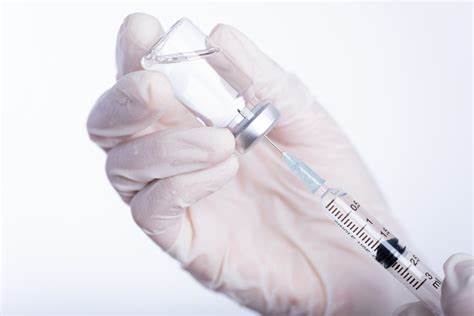Corticosteroids or steroids are synthetic drugs similar to cortisol, a hormone produced by our adrenal glands.
They are a type of medical treatment that involves injecting a high dose of anti-inflammatory medication directly into a specific area of the body to relieve pain and inflammation. These injections are often used to treat various conditions, including inflammatory arthritis, joint pain, and chronic pain. They work by suppressing the immune system and reducing inflammation in the affected areas.
Why are steroids injected?
Steroid injections are far more potent and have a rapid effect than oral steroid medications. Therefore, doctors use them to bring about fast relief. Also, doctors can easily detect the problem areas with the injection.
What is a steroid joint injection?
Steroid injections comprise a corticosteroid and an anesthetic agent. These drugs are transmitted to the painful joint within the joint capsule.
The injections effectively reduce inflammation when transmitted directly to the painful area. Duration of pain relief can last from some days to even years, and doctors usually recommend a treatment program that includes therapy and exercise.
You can receive an injection in the following areas of the body
- facet joints
- sacroiliac joint
- coccyx
- hip joint
- shoulder
- elbow
- hand
- knee
- ankle
- foot
Who can receive the injection?
Often people have joint pain due to medical conditions; some of the common illnesses include the following:
- Osteoarthritis
- Gout
- Autoimmune Diseases
- Ankylosing spondylitis
- Avascular necrosis (osteonecrosis)
Steroid injections can be injected into the joints of patients suffering from the conditions mentioned above and numerous other illnesses that affect the joints. Often, the injection is suggested for people who do not respond to standard treatment procedures like physical therapy, rest, or oral medication. Certain patients especially pregnant women, people with infections and other bleeding issues, must not receive the fluoroscopic steroid injection.
Procedure before treatment
The doctor will examine your medical history; at this point, you may be asked any question about your overall health. If you take aspirin or any blood thinning medicine, the doctor will ask you to stop the intake some days before the procedure.
At the beginning of the procedure, the patient is asked to sign the consent form. And they are asked to state some info about the medicines they are currently taking and if they have any allergies.
1: The patient is prepared
The patient is asked to lie down on an x-ray table. Local anesthesia is used in the treatment area. Since the anesthesia is local, the patient remains awake during the treatment. Sedative like Valium is often given for the procedure.
2: insert the needle
With a fluoroscope’s help, the doctor inserts a hollow needle through the skin and into the joint or the painful area. This technique allows the doctor to witness where the needle is being inserted into the monitor. There is a little discomfort, but patients often feel a little pressure and there is no pain at all.
3: inject the medication
Once the needle is in place, the medicine is injected into the joint capsule. After that, the needle is removed. Sometimes more than one joint is injected with the drug.
Post-treatment procedure
Most patients find walking easy after the procedure as there is generally no pain. They are put under examination for a short while. Since there are no adverse aftereffects and no need for prolonged recovery or rest, most patients can resume full-time activity the following day. Sometimes, a minor soreness around the injection site can be relieved through ice packs or a low-dose painkiller. Often doctors ask you to record your instances of pain over the next couple of weeks. You will feel slight discomfort as the numbness goes away, and then the steroid will come into effect. Joint steroid injection can bring long-term relief with this simple treatment plan
What are the results of the treatment procedure?
A couple of days after the procedure, you will experience relief in the area. This usually lasts several months. Once the effect wears off, you can get another shot. With the help of physical therapy, you can sustain relief longer.
Final thoughts
Steroid injections for joints can provide several benefits, including reducing pain and inflammation, improving joint function and mobility, and potentially delaying surgery. These injections are often recommended for people with inflammatory arthritis, such as rheumatoid arthritis, or those with joint pain caused by injuries or other conditions like osteoarthritis. However, it’s important to note that steroid injections do not cure these conditions, and the benefits may only be temporary. Long-term use can also increase the risk of specific health problems. As with any medical treatment, discussing the potential risks and benefits with your doctor or healthcare provider is essential to determine if steroid injections are right for you.



































